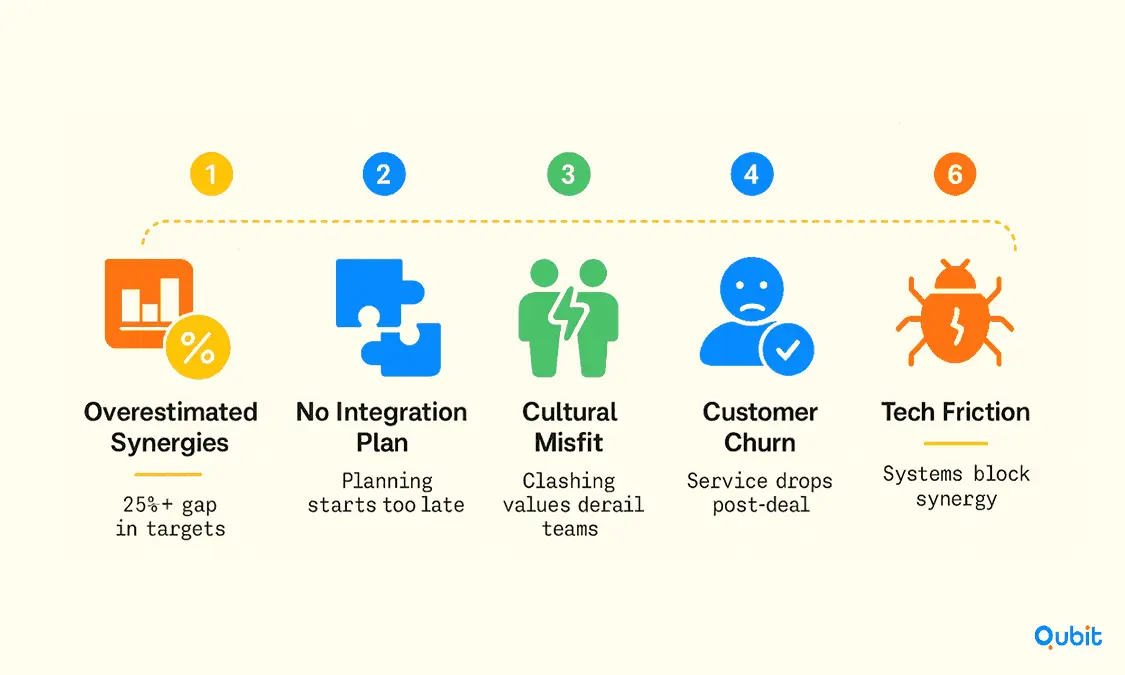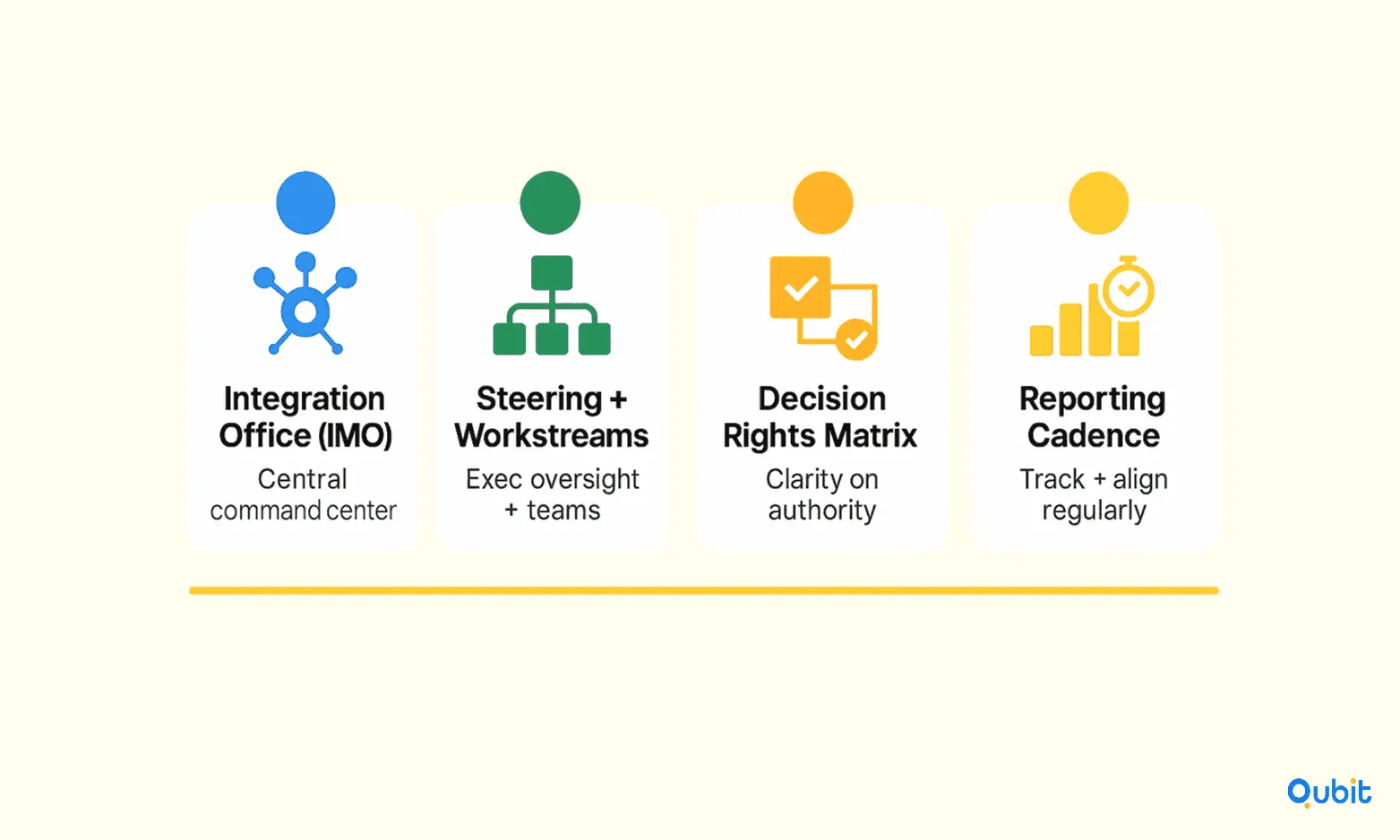Acquiring a company is only the beginning of a value creation journey. For investors, especially in private equity and corporate M&A, much of the risk and upside occurs not at deal signing, but during post-acquisition execution. Industry studies consistently show that somewhere between 50%–90% of deals fail to deliver the anticipated value, with lackluster integration and avoidable post-acquisition pitfalls as major culprits. This comprehensive guide articulates the most frequent execution failures and provides actionable best practices for investors determined to protect and grow their investments.
The High Stakes of Post-Acquisition Execution
Not all deals that look great on paper translate into real-world success. The time after acquisition is where value is either crystallized or squandered. Investors must shift rapidly from “deal mode” to “integration mode.”
This requires balancing ongoing business performance with deep transformation across people, processes, technology, and culture. Missteps in this phase can undermine investment theses, damage reputations, and destroy long-term value creation. The discussion naturally extends to the comprehensive framework outlined in startup acquisition strategies, which provides the broader context of early-stage investment dynamics.
Why Post-Acquisition Execution Fails: A Systems View

a. Overestimating Synergies
Many investors have fallen victim to overly ambitious synergy targets; research indicates that a quarter of managers overestimate post-deal synergies by more than 25%. Miscalculating cost savings or growth opportunities sets the stage for disappointment and pressure on leadership teams.
b. Insufficient Integration Planning
Integration is too often an afterthought. Delaying post-merger plans until after deal completion leaves teams scrambling and impedes the delivery of promised synergies. Effective investors start integration planning as early as the due diligence phase, using findings to inform priorities and risk mitigation.
c. Cultural Misalignment
Culture clashes remain a top reason for failed integrations. Merging entities with different values, leadership styles, and decision-making norms without thoughtful management leads to disengaged employees, talent loss, and operational friction.
d. Talent Flight and Leadership Missteps
Retaining key employees is crucial to realizing the intended value. Unclear communication, misaligned incentives, and neglect of talent planning precipitate turnover of top performers eroding knowledge and relationships built over years.
e. Neglected Customers
Shifting internal focus to integration can distract from customer needs, risking churn and reputational damage. Customer retention is especially vulnerable if product, service, or relationship continuity is not prioritized post-acquisition.
f. Technology & Operational Complexity
Mismatched or incompatible IT systems, clashing processes, or non-standardized reporting create bottlenecks. Poorly managed technology integrations can disrupt core operations, delay synergies, and frustrate teams.
2. Best Practices: How Savvy Investors Avoid the Traps
a. Integration Planning Starts in Due Diligence
Investors who consistently deliver value begin integration planning during diligence, identifying integration “hot spots,” cultural red flags, and execution risk. Mapping critical interdependencies, KPIs, and resource needs early allows for realistic synergy modeling and staged execution plans. The startup acquisition integration plan highlights how pre-deal integration strategies establish a framework for smooth transitions, ensuring synergies are realized effectively.
Key Steps:
- Assign an integration leader or team before deal closing.
- Engage stakeholders from both sides in integration design.
- Use diligence findings to prioritize risk areas, such as customer contracts, IT harmonization, or cultural alignment.
b. Set Realistic and Measurable Synergy Targets
Overpromising synergies damages trust and demotivates teams. Leading investors use conservative, bottom-up synergy estimates, accounting for integration costs, delays, and execution risks. They implement clear measurement frameworks with transparent reporting on progress and barriers to unlock deal value.
Key Steps:
- Set separate short- and long-term synergy milestones.
- Document assumptions clearly and revisit based on integration reality.
- Link incentives for management and teams to realistic, phased synergy delivery.
c. Prioritize People: Retain Key Talent and Cultivate Engagement
Post-acquisition success relies on people, not just processes. Investors focus on retention of key leaders and rainmakers, realignment of management incentives, and robust change management initiatives. Building trust through transparent communication and giving employees a role in shaping the future organization drives higher retention and engagement.
Key Steps:
- Design attractive retention packages for mission-critical personnel.
- Articulate the strategic rationale behind the transaction to all staff.
- Appoint internal “champions” to model desired cultural behaviors.
d. Take a Transformational, Not Transactional, View
Focusing exclusively on cost-cutting or one-off process harmonization can undermine long-term performance. The most successful post-acquisition transitions are driven by a transformational mindset, deploying operating models, systems, and cultures that accelerate innovation, customer value, and growth.
Key Steps:
- Rethink processes and structures for the combined entity not merely “bolting on” the acquisition.
- Empower integration teams to challenge the status quo and recommend new approaches.
3. Cultural and Operational Alignment: Avoiding Friction
a. Cultural Due Diligence
Conduct cultural fit assessments before signing the deal, identifying areas of alignment and sources of potential conflict.
Key Steps:
- Run anonymous employee surveys and cultural workshops.
- Compare leadership styles and decision rights models.
- Appoint joint integration task forces from both legacy organizations.
The analysis of team retention after startup acquisition highlights effective methods for maintaining cohesion and sustaining talent during such transitions.
b. Change Management Programs
Prioritize internal communications and structured change management. Anticipate employee concerns and proactively address “us vs. them” dynamics.
Key Steps:
- Set up an integration “war room” or management office.
- Communicate regularly and transparently on integration progress, wins, and remaining challenges.
- Implement structured team-building and leadership development sessions
Clear Integration Governance and Leadership
A frequent cause of post-acquisition failure is unclear governance or weak leadership of the integration effort. Effective investors establish well-defined governance structures with dedicated teams empowered to make decisions aligned with strategic objectives. Clear leadership prevents bottlenecks, resolves conflicts swiftly, and ensures accountability.

Key components include:
- Integration Management Office (IMO): A centralized hub coordinating all integration activities, tracking progress against goals, facilitating communication, and managing risks.
- Steering Committees and Workstreams: Senior executives provide oversight, while cross-functional workstreams handle specific areas like operations, IT, HR, and sales.
- Decision Rights Matrix: Documenting who makes what decisions, reducing confusion and delays.
- Regular Reporting Cadence: Transparent updates foster alignment and momentum.
With strong governance, integration teams have the clarity and authority needed to translate plans into results efficiently.
Data-Driven Performance Management
Sustained success depends on rigorous measurement and analytics. Investors implement detailed performance metrics to track integration health, synergy delivery, financial results, customer satisfaction, employee engagement, and operational efficiency.
Effective approaches include:
- Defining key performance indicators (KPIs) aligned with deal objectives.
- Creating dashboards for real-time visibility.
- Conducting frequent integration reviews, adjusting tactics based on data.
- Encouraging transparency and fact-based problem solving rather than politics.
Data-driven management helps investors detect early warning signs, optimize resource allocation, and sustain executive focus.
Customer and Market Focus
It’s easy to overlook customers during complex internal changes, yet customer retention is vital. Investors ensure the combined organization maintains strong customer focus and service continuity.
Approaches include:
- Communicating proactively with key customers about changes and benefits.
- Protecting senior sales and account management teams.
- Monitoring churn rates closely and investigating issues swiftly.
- Accelerating combined go-to-market efforts to capitalize on cross-selling or enhanced solutions.
- Using customer feedback loops to fine-tune integration and offerings.
Maintaining or improving customer satisfaction protects revenue and strengthens acquisition value.
Financial Discipline and Cost Management
Post-acquisition is a period where financial discipline must be relentless. Investors deploy rigorous budget controls, monitor cash flows, and enforce integration cost transparency.
- Setting clear budgets for integration-related expenses.
- Tracking cost synergies and benchmarking against initial targets.
- Ensuring ROI focus for any proposed restructuring or technology investments.
This financial oversight safeguards margins and protects deal economics.
Scenario Planning and Risk Mitigation
Robust risk management is key. Successful investors anticipate potential pitfalls through scenario planning and develop contingency plans.
- Assessing operational, market, and regulatory risks.
- Creating response frameworks for talent loss, technology failure, or key customer departures.
- Stress-testing integration timelines and milestones.
Preparedness reduces surprises and equips teams to respond swiftly.
Organizational Culture Alignment
Beyond leadership and processes, the DNA of how people interact, organizational culture, can determine integration success or failure. Investors who recognize the importance of cultural alignment proactively engage employees at all levels to define and reinforce shared values, decision-making norms, and behavioral expectations.
- Culture Mapping: Diagnosing similarities and gaps in cultural traits between organizations.
- Culture Champions: Identifying influential individuals who can bridge cultural divides and promote new ways of working.
- Symbolic Actions: Celebrating quick wins, blending rituals, and communicating success stories to reinforce the new culture.
Talent Strategy and Organizational Health
The backbone for successful post-acquisition execution is a resilient, engaged workforce. Investors prioritize comprehensive talent strategies to retain top performers and boost employee morale.
- Leadership Alignment: Ensuring leadership teams across acquired and acquiring entities are aligned in vision and communication.
- Retention Plans: Crafting retention packages that are competitive and tied to integration milestones.
- Cultural Integration: Running workshops and team-building exercises to fuse cultures and create shared organizational identity.
- Communication: Transparent, frequent communication to alleviate uncertainty and maintain engagement.
This people-first approach reduces turnover risks and helps sustain the organization’s performance trajectory.
Technology Modernization
Many integrations present an opportunity to leapfrog legacy constraints by modernizing the technology environment.
- Tech Audit: Evaluating both companies’ technology portfolios to identify redundancies and risks.
- Integration Roadmap: Prioritizing critical migrations, enhancements, or system decommissions that support synergy realization.
- Digital Investment: Leveraging the integration to invest in automation, analytics, and cybersecurity.
Modernized, harmonized technology underpins post-acquisition agility and innovation.
Conclusion
Post-acquisition execution is arguably the most critical phase where investment promises are either fulfilled or lost. Investors who anticipate common pitfalls and deploy disciplined, proactive strategies significantly increase their chances of creating lasting value. From early integration planning and realistic synergy setting to prioritizing culture, people, and technology, the path to success demands comprehensive attention to detail and strong governance.
Equally important is fostering transparent communication, maintaining financial rigor, and preparing for contingencies. By viewing post-acquisition integration as a transformational opportunity rather than a transactional chore, investors enable smoother transitions, stronger organizations, and ultimately, greater returns.
If you're looking to secure the right investors to support a stable post-acquisition team, we at Qubit Capital can help. Explore our Investor Discovery and Mapping service to connect with investors who value retention.
Key Takeaways
- Don’t wait until after deal closing. Early planning based on diligence insights reduces surprises and sets a clear roadmap.
- Avoid overpromising. Use conservative, measurable targets and track progress transparently.
- Retain key talent, communicate openly, and foster cultural alignment to maintain morale and continuity.
- Use dedicated integration teams, defined decision rights, and regular reporting to drive accountability.
- Monitor KPIs and use real-time analytics to guide course corrections swiftly.
- Conduct thorough audits, prioritize critical systems, and leverage the acquisition to modernize tech infrastructure.
- Implement tight budget controls and transparent cost tracking to safeguard margins.
Frequently asked Questions
When should integration planning begin?
Integration planning should start during due diligence to identify risks and set priorities early.






